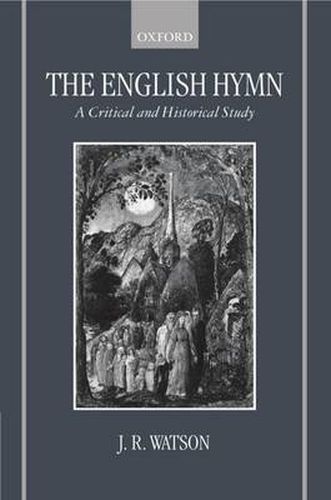Readings Newsletter
Become a Readings Member to make your shopping experience even easier.
Sign in or sign up for free!
You’re not far away from qualifying for FREE standard shipping within Australia
You’ve qualified for FREE standard shipping within Australia
The cart is loading…






D.H. Lawrence, writing of the poems that had meant most to him, said that they were “still not woven so deep in me as the rather banal Nonconformist hymns that penetrated through and through my childhood’. It is not easy to account for this, and most writing about hymns has not helped because it has concentrated on their content and function in worship and liturgy. In the present book the author tries to account for feelings like Lawrence’s by examining the hymn form and its progress through the centuries from the Reformation to the present day. He begins by discussing the status of a hymn text and relates it to the demands made upon it by the needs of singing. A chronological study then traces the development of the English hymn, from the metrical psalms of the Reformation, through the seventeenth century and Isaac Watts to the Wesleys, Cowper, Toplady, and others, and then to the great flood of hymn writing that occurred during the Victorian period, together with the great success of Hymns Ancient and Modern. There are chapters on American hymnody and women’s hymn writing, and sections on gospel hymns and the translation of German hymnody. A final chapter takes the story into the twentieth century, with a brief postscript on the revival of hymn writing since 1960.
$9.00 standard shipping within Australia
FREE standard shipping within Australia for orders over $100.00
Express & International shipping calculated at checkout
D.H. Lawrence, writing of the poems that had meant most to him, said that they were “still not woven so deep in me as the rather banal Nonconformist hymns that penetrated through and through my childhood’. It is not easy to account for this, and most writing about hymns has not helped because it has concentrated on their content and function in worship and liturgy. In the present book the author tries to account for feelings like Lawrence’s by examining the hymn form and its progress through the centuries from the Reformation to the present day. He begins by discussing the status of a hymn text and relates it to the demands made upon it by the needs of singing. A chronological study then traces the development of the English hymn, from the metrical psalms of the Reformation, through the seventeenth century and Isaac Watts to the Wesleys, Cowper, Toplady, and others, and then to the great flood of hymn writing that occurred during the Victorian period, together with the great success of Hymns Ancient and Modern. There are chapters on American hymnody and women’s hymn writing, and sections on gospel hymns and the translation of German hymnody. A final chapter takes the story into the twentieth century, with a brief postscript on the revival of hymn writing since 1960.